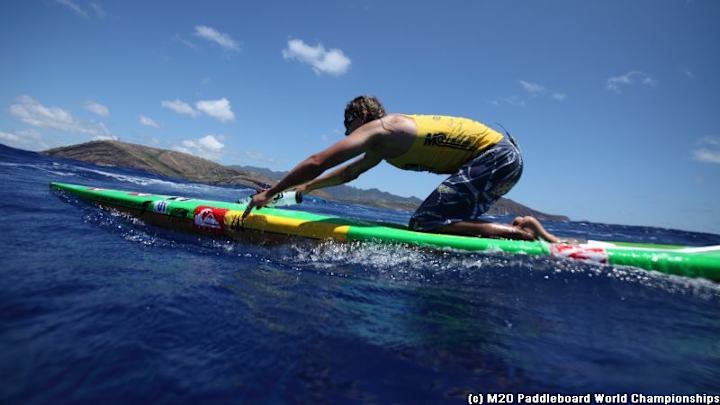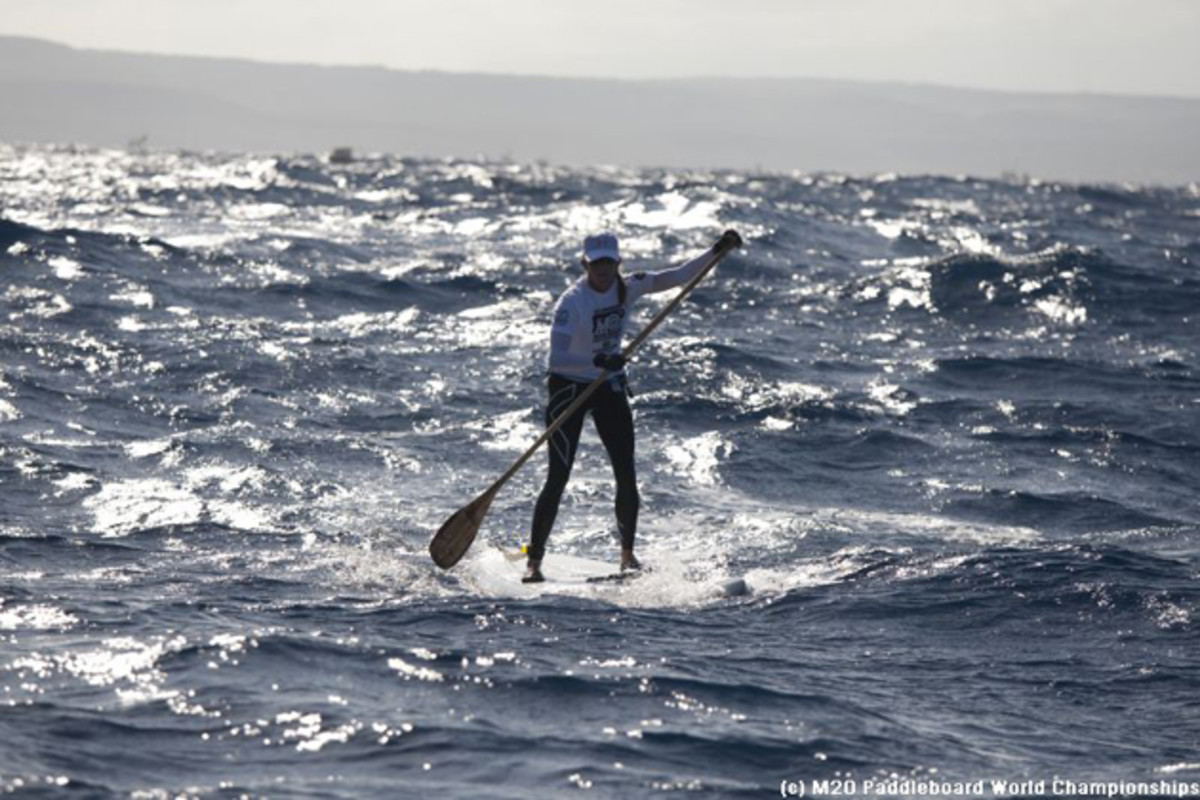World’s Premier Paddleboard Event Goes Island-to-Island in Hawaii

The tips of Moloka’i and O’ahu separate by 32 miles, including the daunting Ka’iwi Channel. Thirty-two miles of shifting currents, open water and unknown conditions. Taking on that 32 mile-stretch on a paddleboard has given the Molokai’i-2-O’ahu Paddleboard World Championships a singular position atop the list of paddleboard races in the world for the last 18 years.
Taking on Ka’iwi isn’t easy, but it proves memorable.
“There is something about that race that is hard to explain,” Jenny Kalmbach, one of the world’s top stand up paddleboarders and past winner of the race, tells Edge. “At the end of the day, it keeps you coming back. At times it can be frustrating and challenging, but it is a satisfying feeling when you finish and cross and no matter where you finish you end up being grateful.
“I won it once and I want to [know] what it feels like to win it again,” says Kalmbach. Now, she'll have her chance on Sunday, July 27, when one of the largest casts of athletes in race history sets off from the rural Kaluakoi Beach on Moloka’i’s north shore to navigate the currents of the Pacific Ocean’s Ka’iwi Channel—also known as the Moloka’i Channel—toward O’ahu’sMaunalua Bay on the south shore.

The race has local Hawaiian history rooted in its current success. Founded in 1997, M2O grew from a grassroots challenge for legendary lifeguards competing in prone paddleboading. As big-wave surfers looked for a challenge during the flat wave times of summer, the ancient Polynesian art of paddleboarding gave the race momentum. Eventually the race added in the stand up division, and in 2014, hundreds of men and women from over 20 countries will brave the currents in the fastest downwind-route channel in the world.
Top athletes will take on the channel in less than five hours, riding mid-channel waves that crest more than 12 feet and carry paddlers hundreds of meters.
Super SUP Athlete Jenny Kalmbach Shares on her Career, Growth
“You may be the best paddler, but a mistake with choosing a line or nutrition and you might not come out on top,” Kalmbach says. “A lot of other races, if you are the most fit, you know where you are going to finish. This race will always jump up and surprise you.”
Racers take on different strategies when crossing. Last year some paddlers took a route to the south in an effort to minimize the effects of a falling tide pulling against them while others charted the shortest distance between the two points. The straightest line won the day in 2013. But 2014 offers new opportunity.
On the men’s side, expect 31-year-old Australian Travis Grant to work to defend his stand up win of 4 hours, 50 minutes, 12 seconds. American paddlers Kai Lenny and Connor Baxter, two Maui-based paddlers that went south last year, will challenge him. Baxter holds the course record and wants to capture his third race crown. Legendary big wave surfer Dave Kalama, who turns 50 this year, returns too. The race’s 2010 winner will pose a certain threat.

On the women’s side, Hawaii’s Andrea Moller and Talia Gangini-Decoite join Kalmbach as past winners hoping to capture the title again.
The prone event always brings the world’s top paddlers and this year is without two-time defending champion Brad Gaul, opening up the door for a new winner on the men’s side. Australian Jordan Mercer won the women’s division while setting a course record in 2011. She was 17 and hasn’t lost the M2O race since.
But even as the athletes match wits and strokes with each other, they all compete against The Channel Bones, the English translation for The Ka’iwi Channel. The channel itself stretches 26 miles and plunges 2,300 feet, creating a narrow canyon that when mixed with inclement weather can make for treacherous boarding. Add in race conditions and a few extra miles to touch beach-to-beach and 32 miles never seemed like such a struggle. Such a thrill. Such an adventure.
Tim Newcomb covers stadiums, design and gear for Sports Illustrated. Follow him on Twitter at @tdnewcomb.
